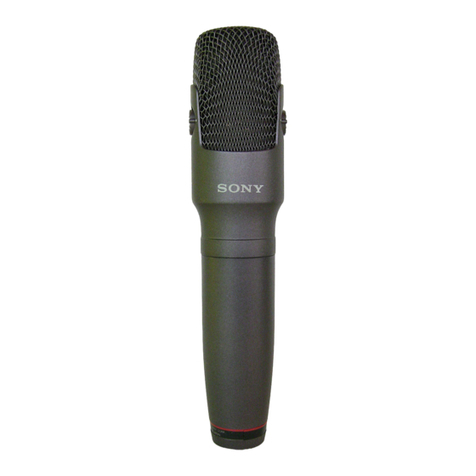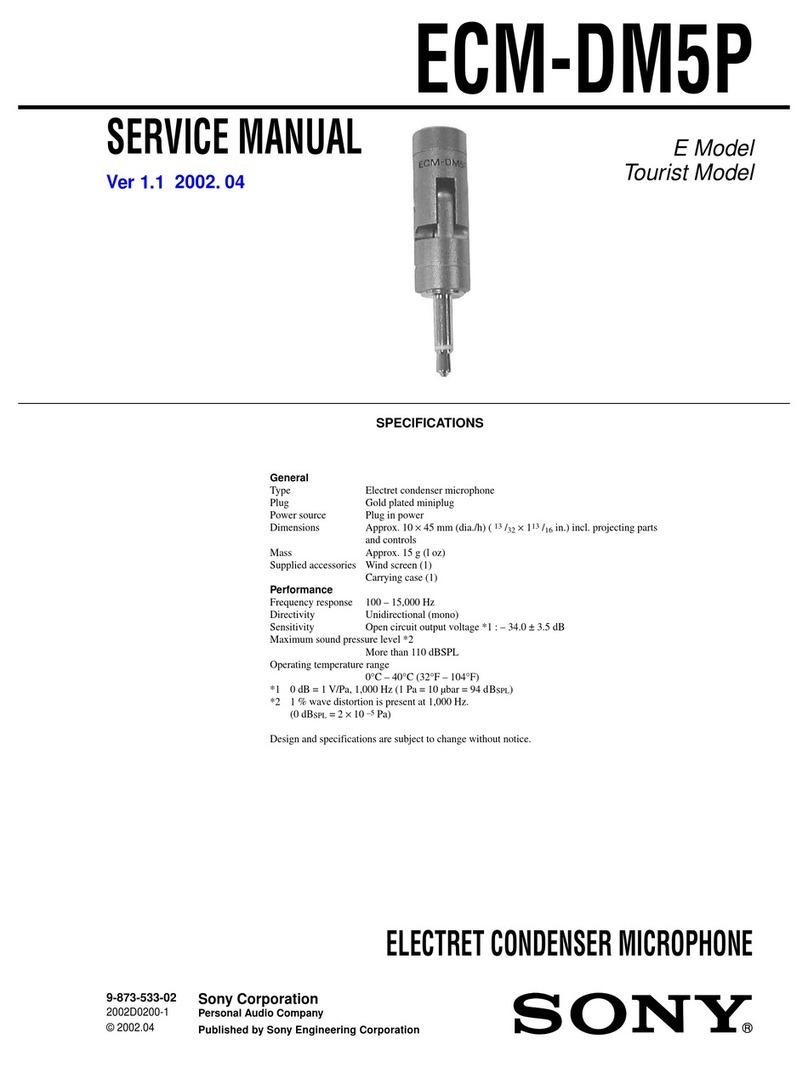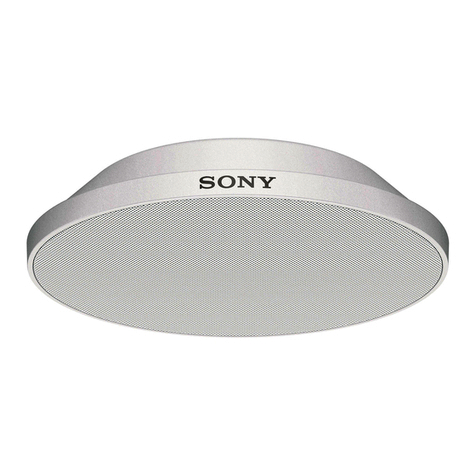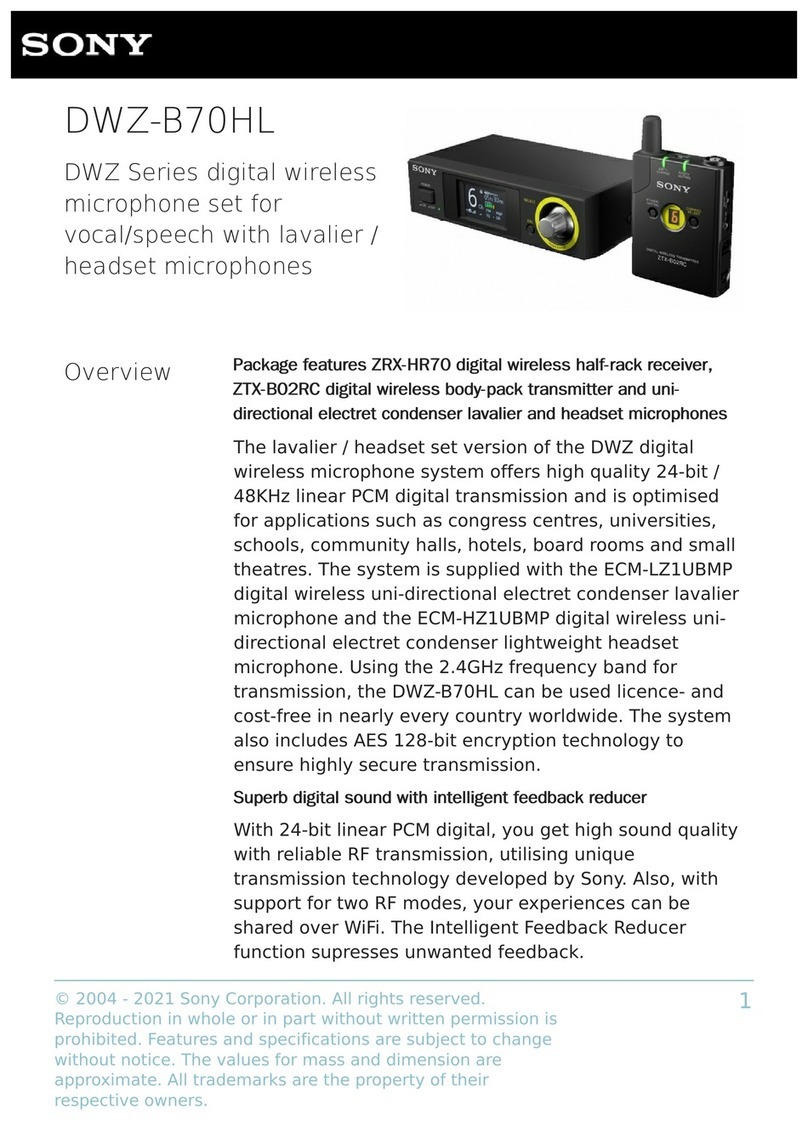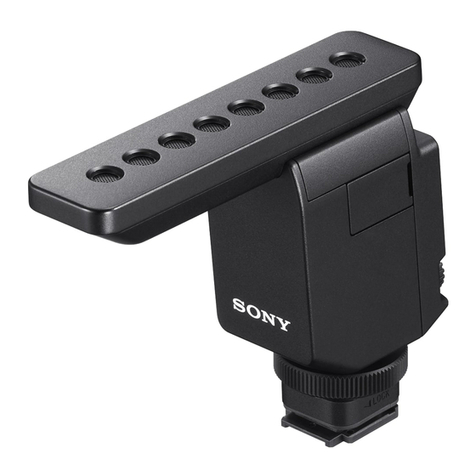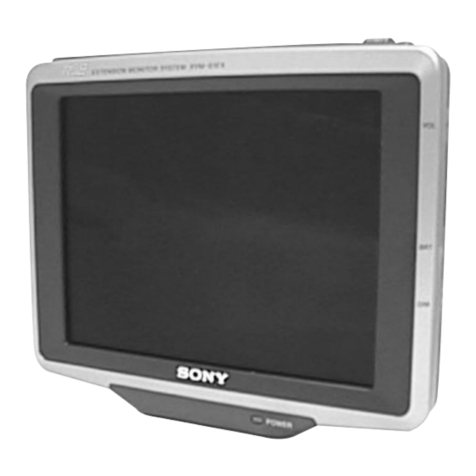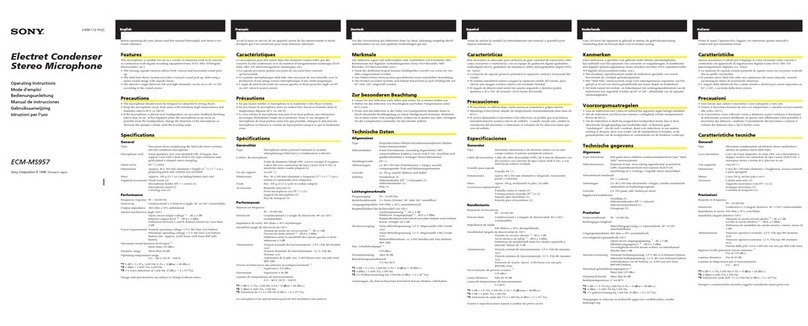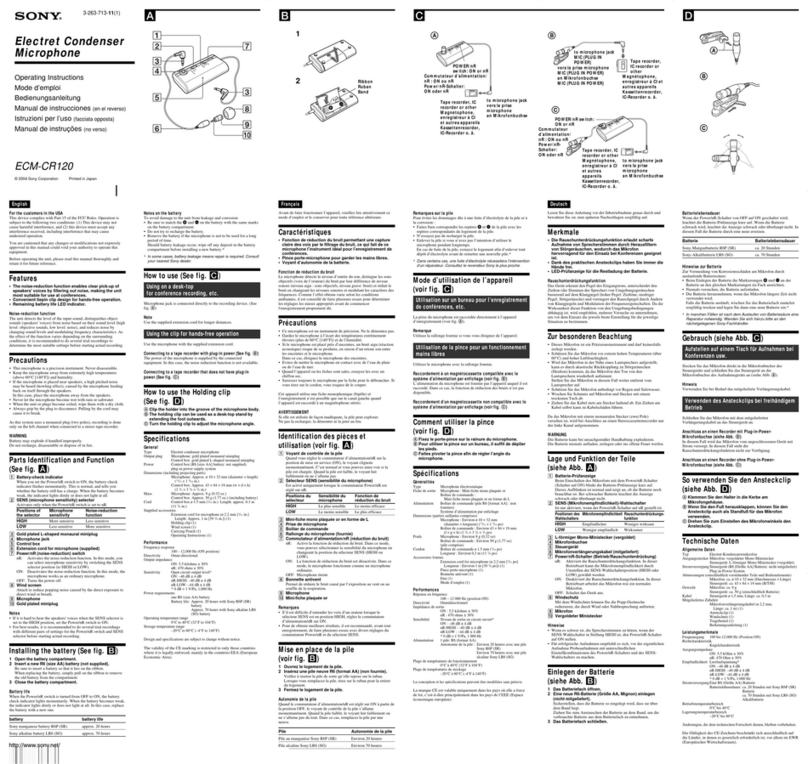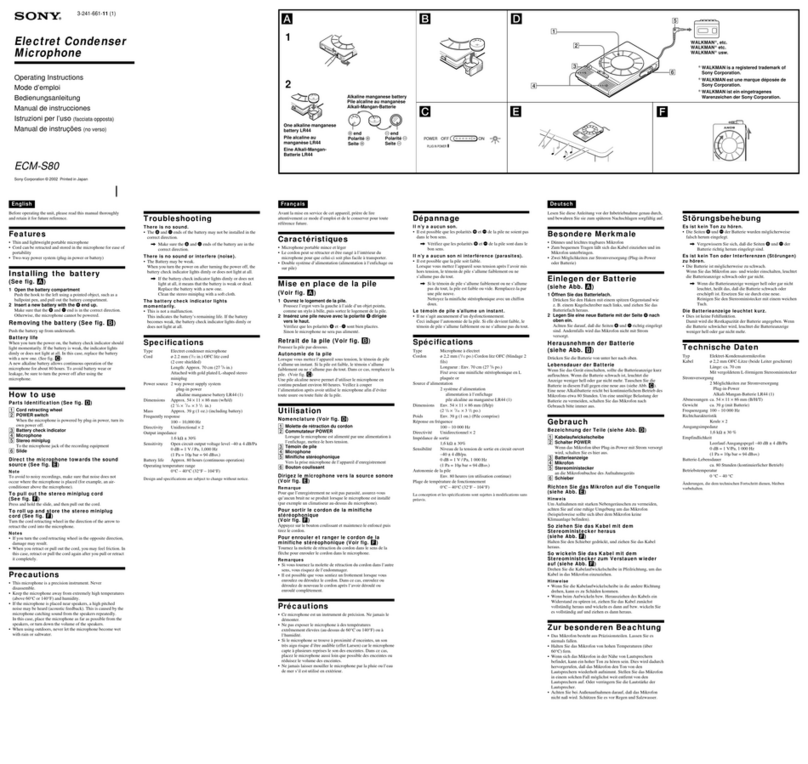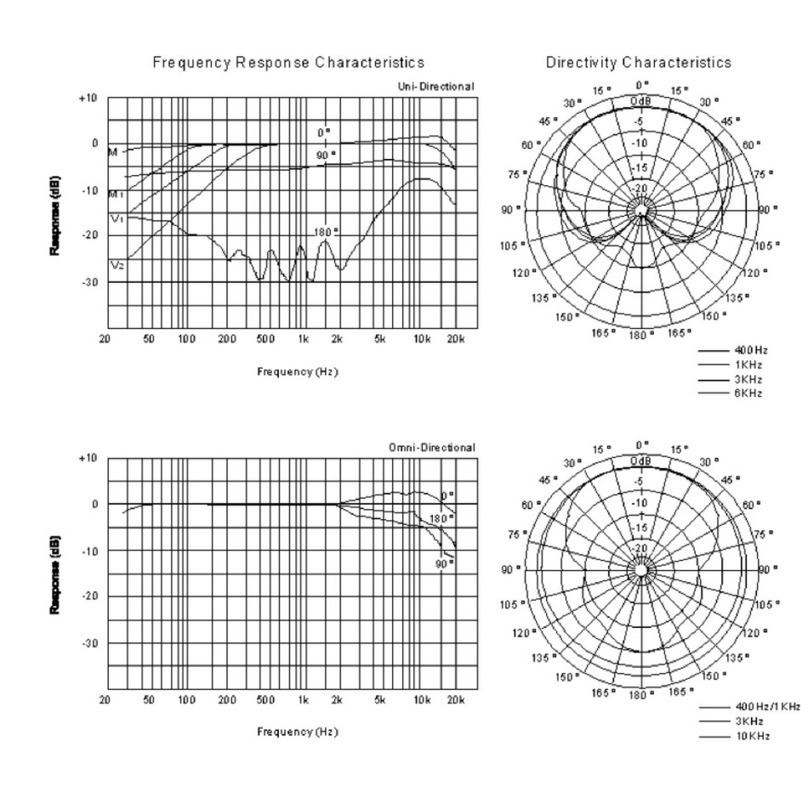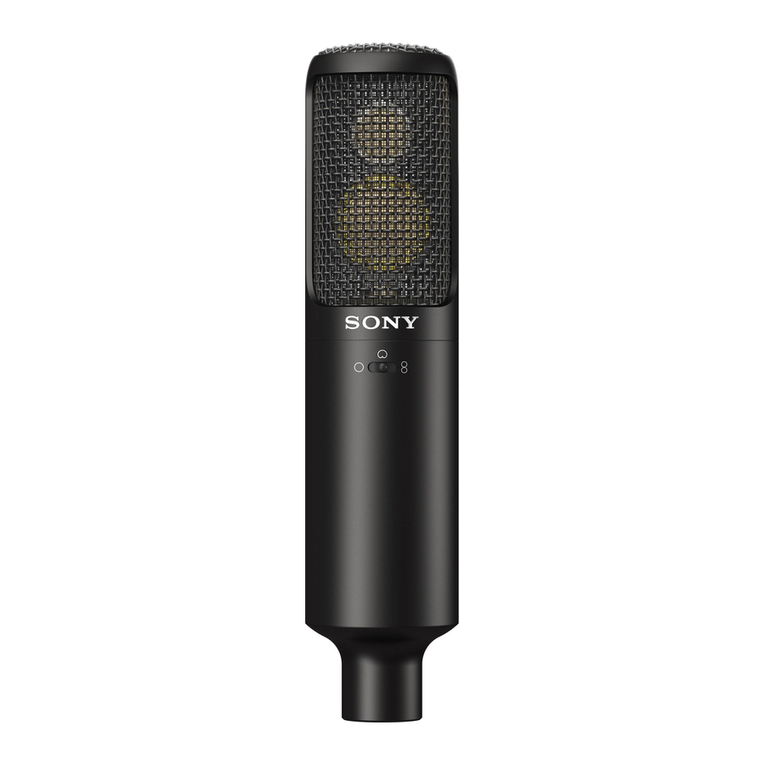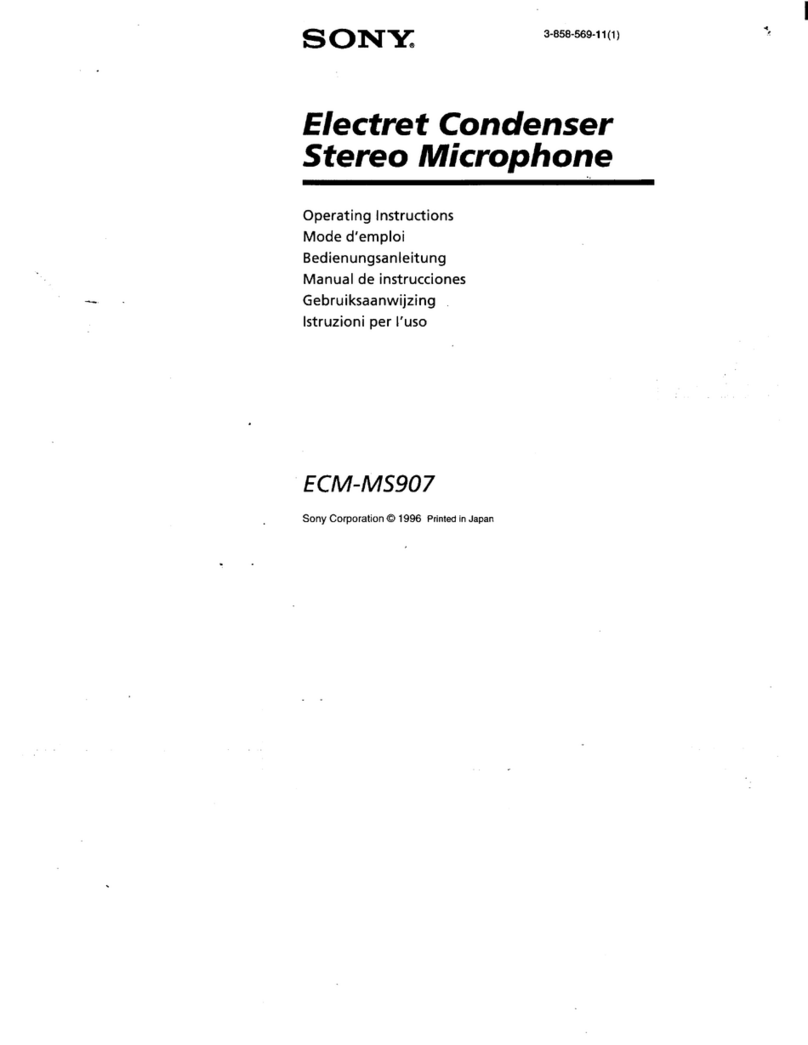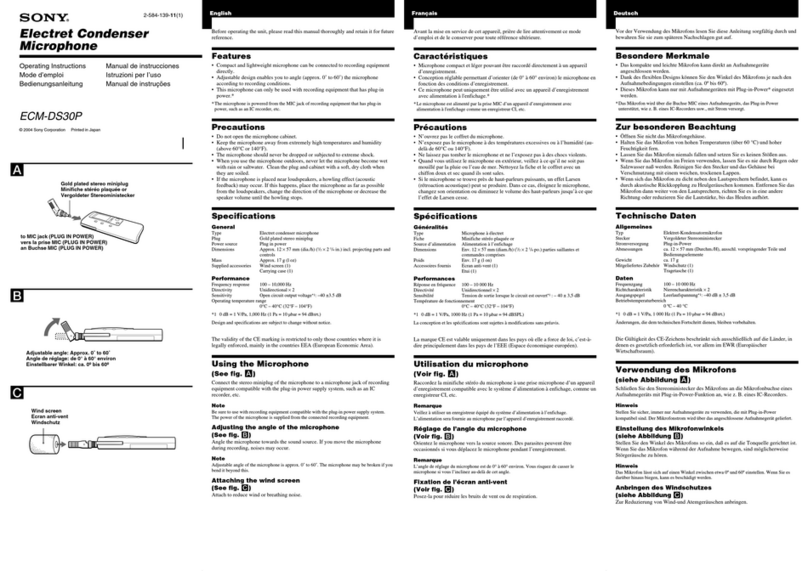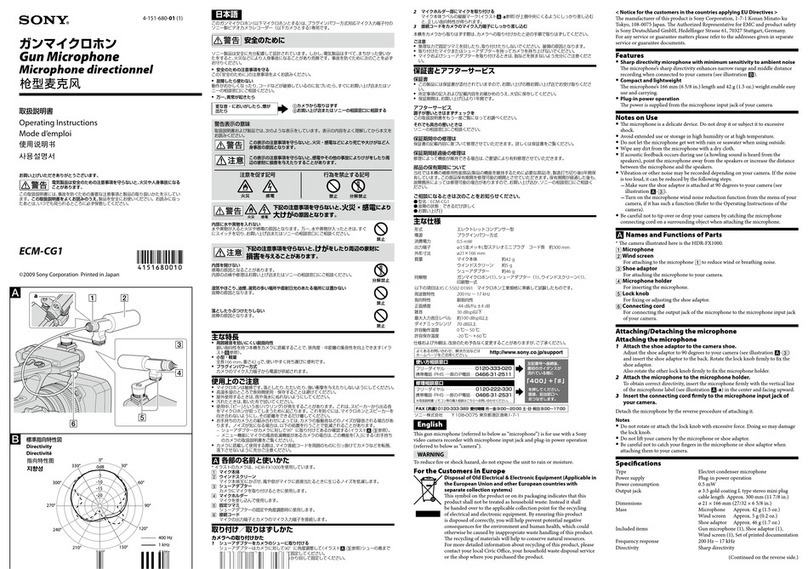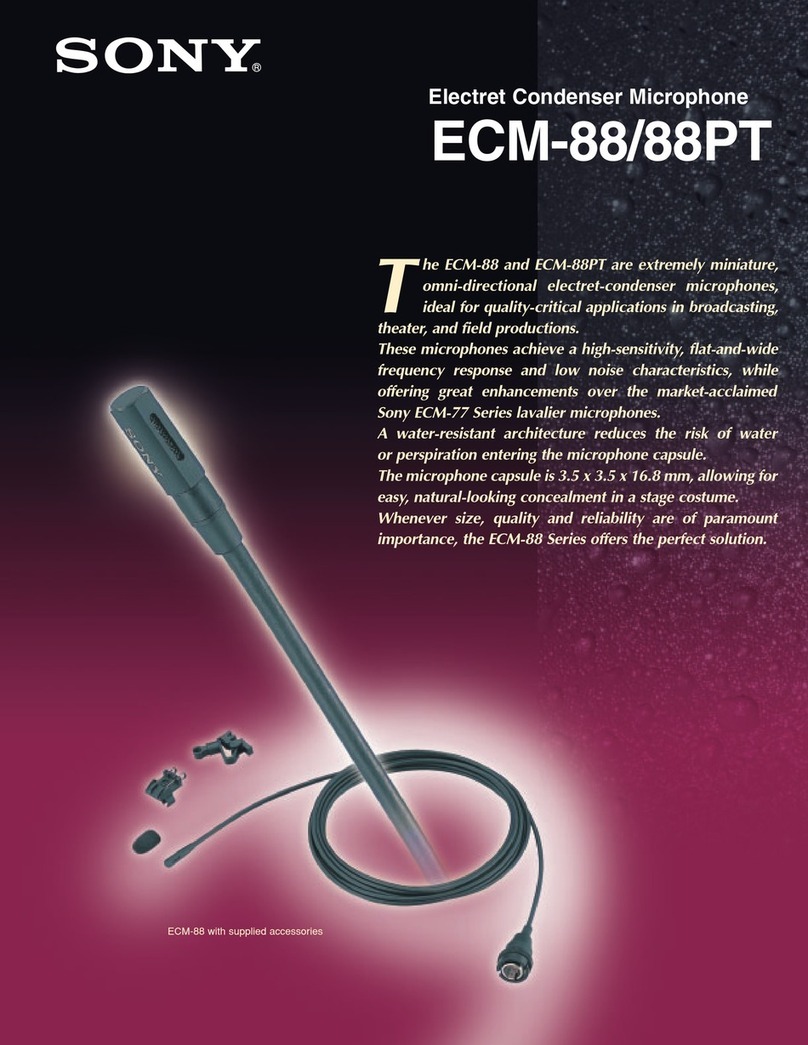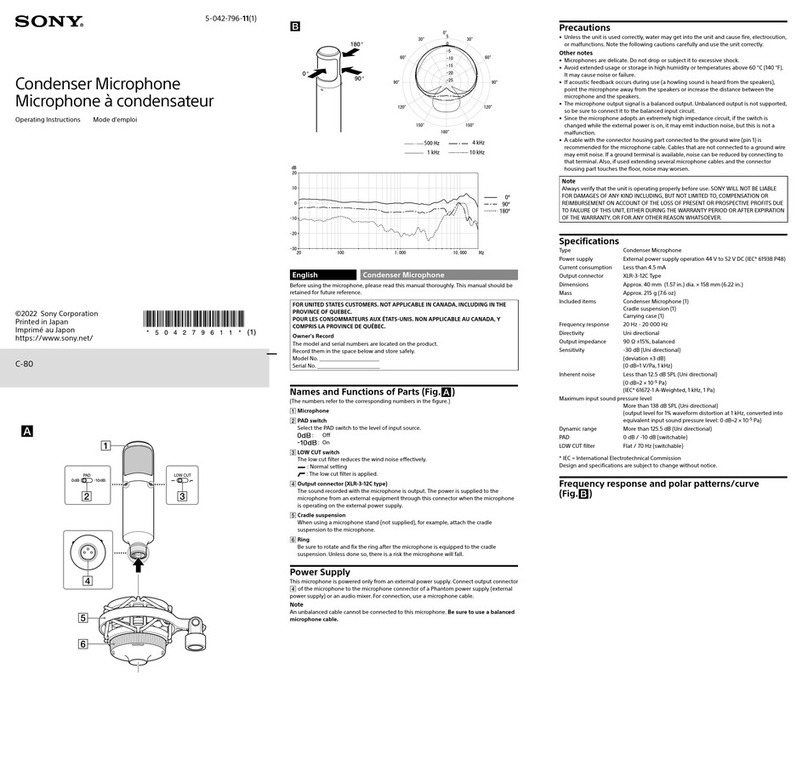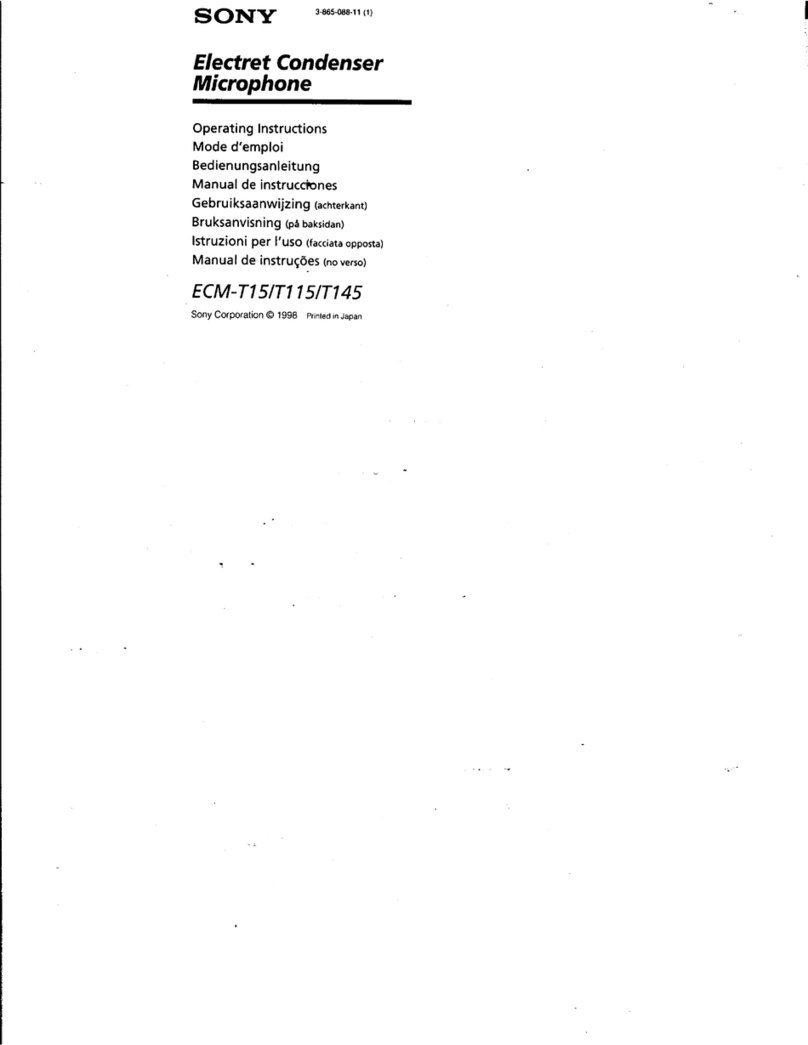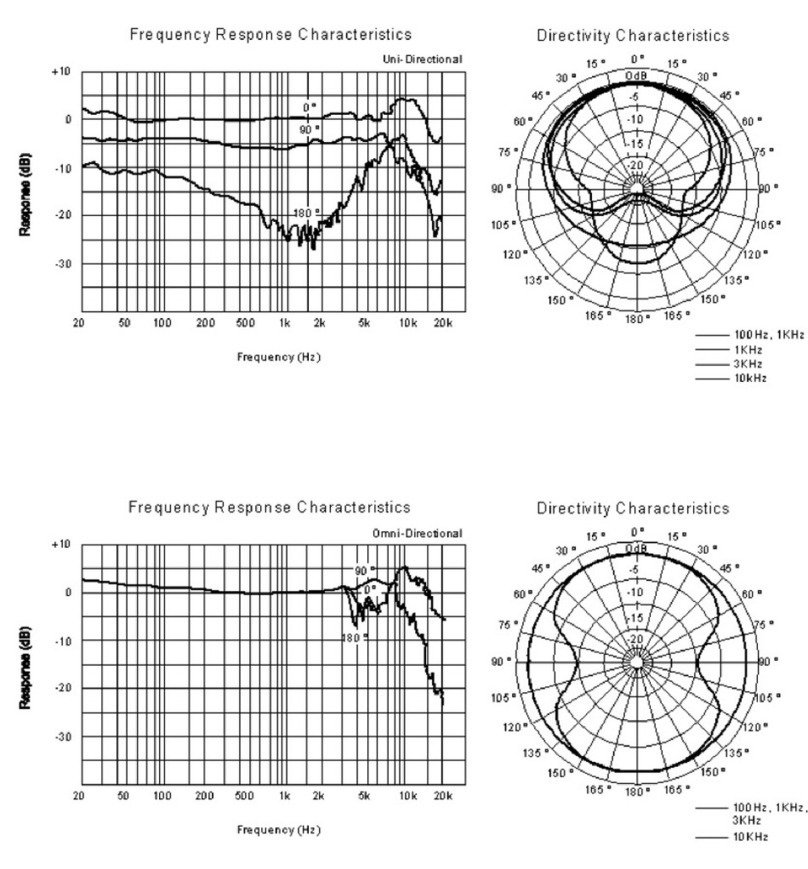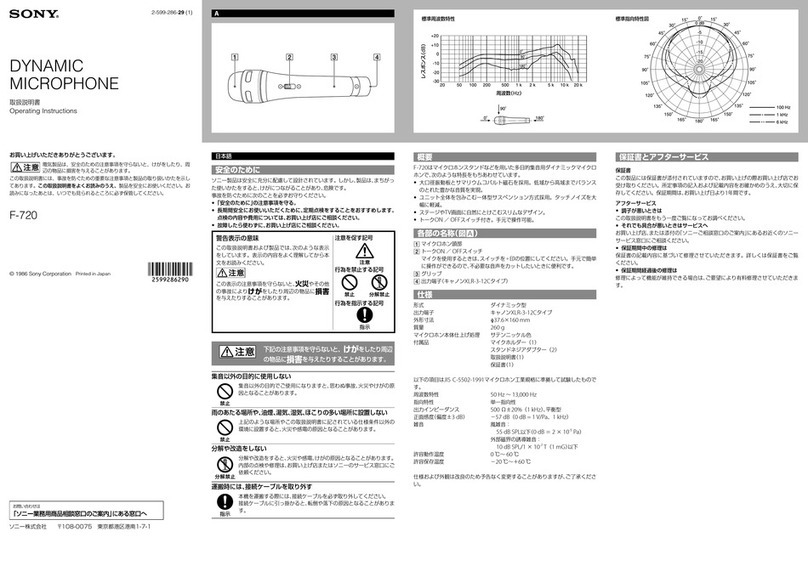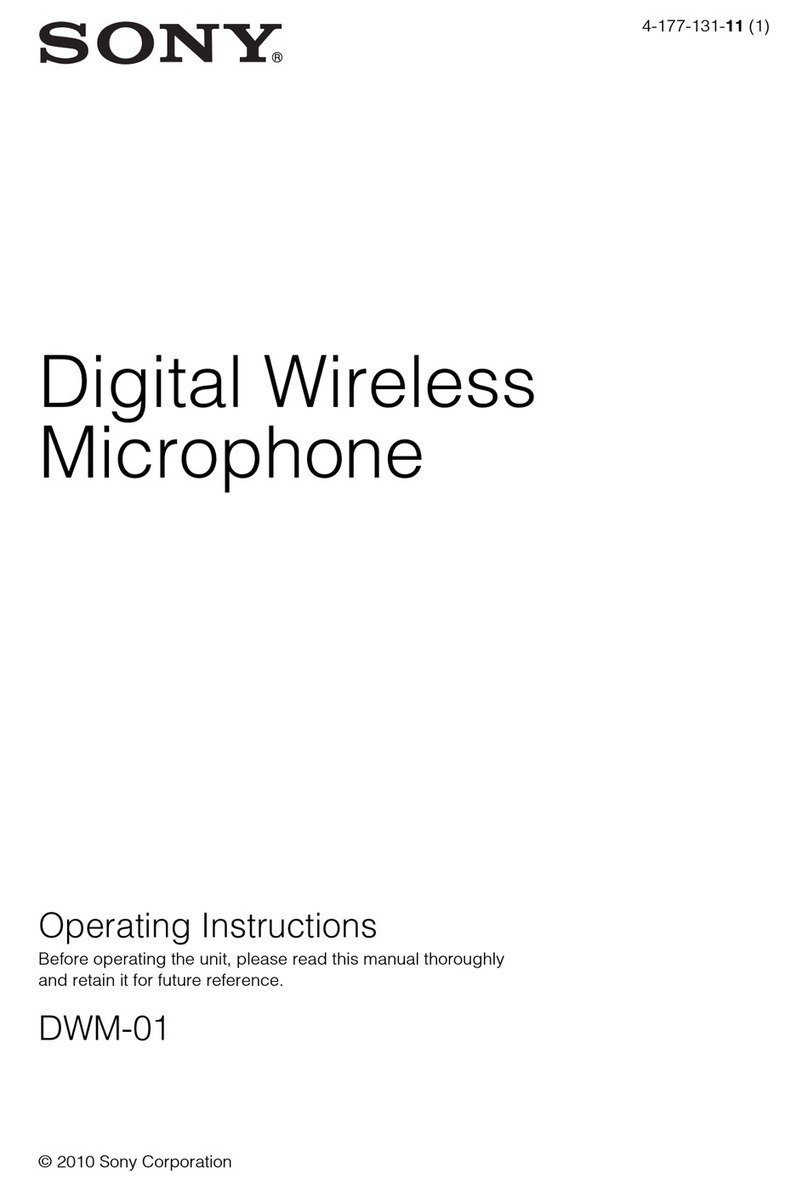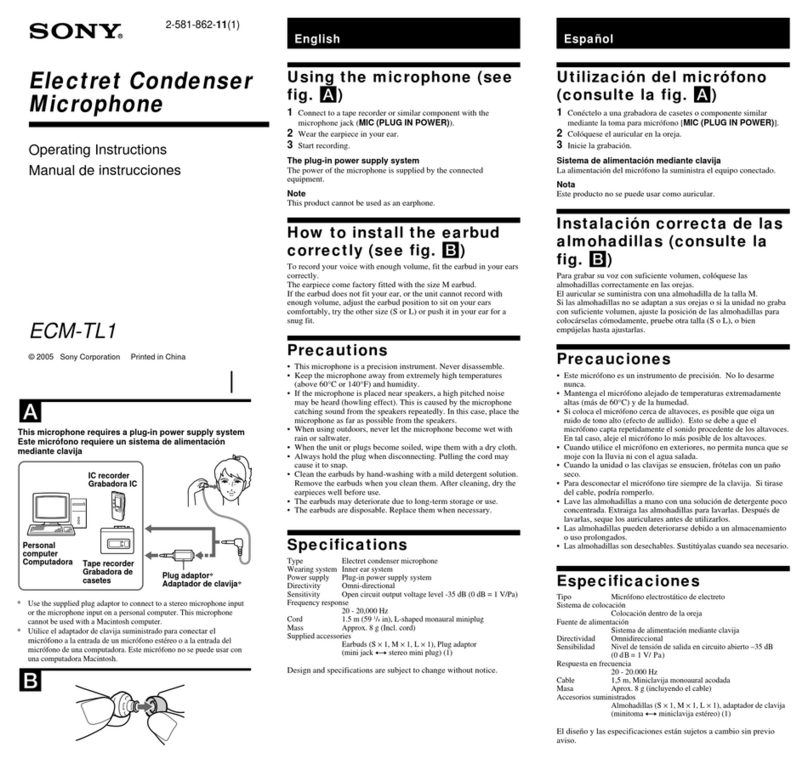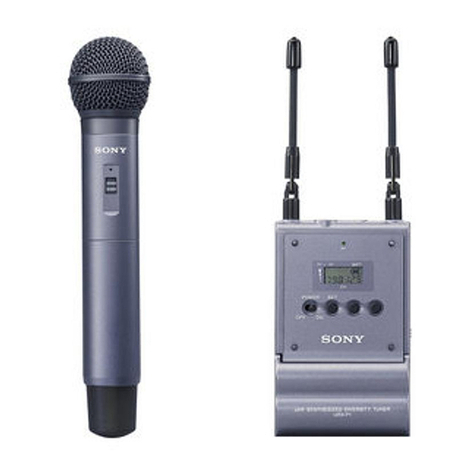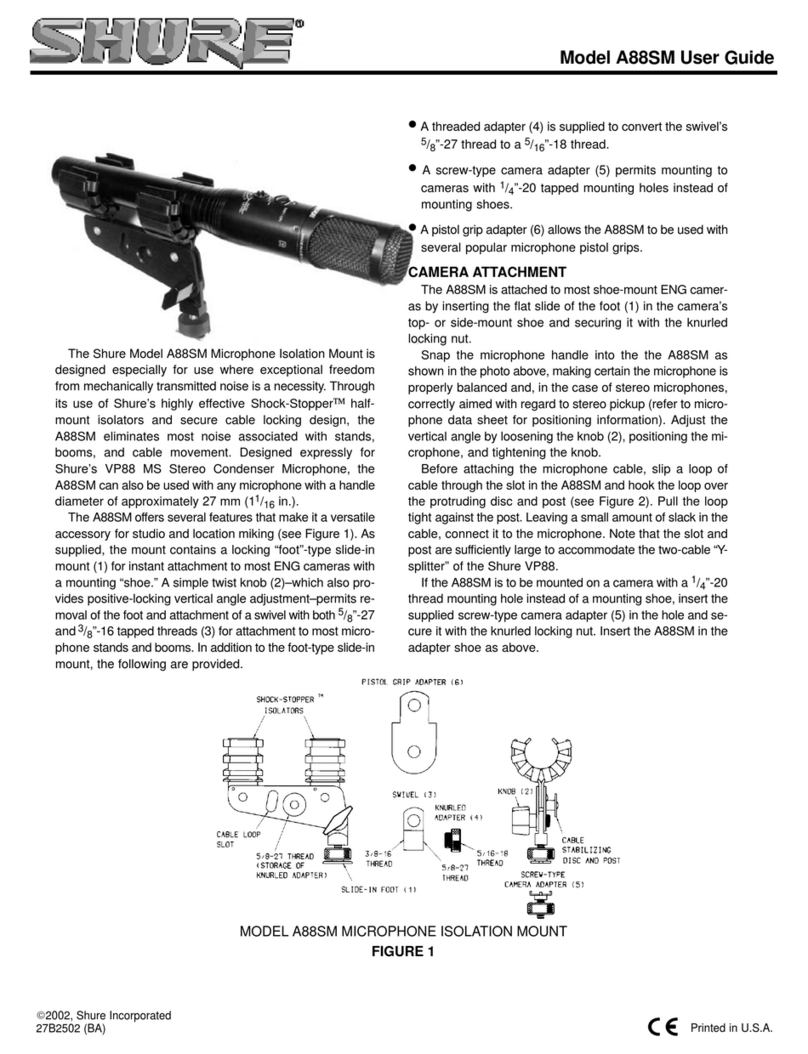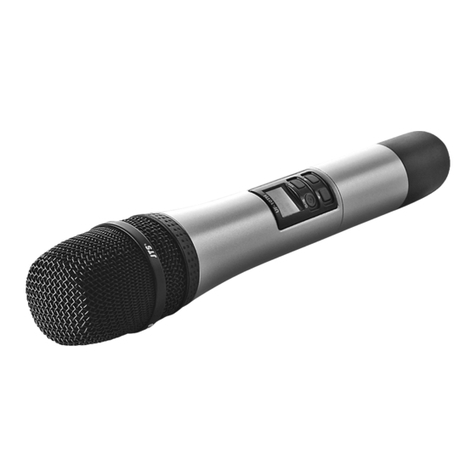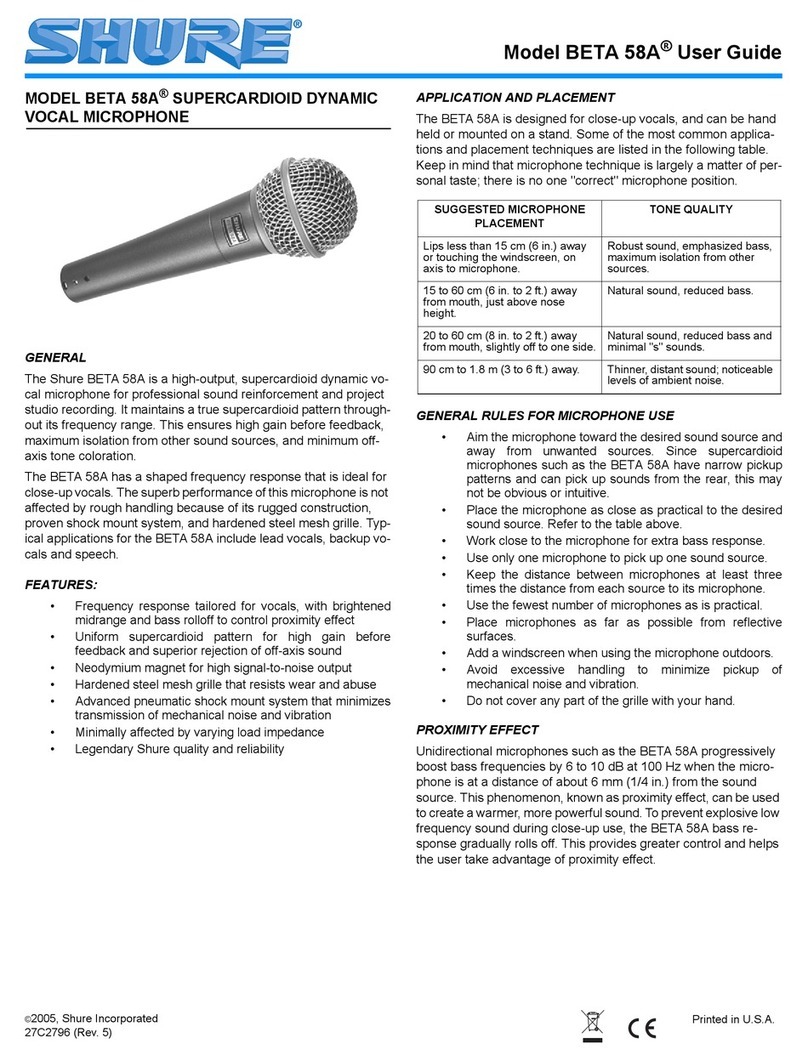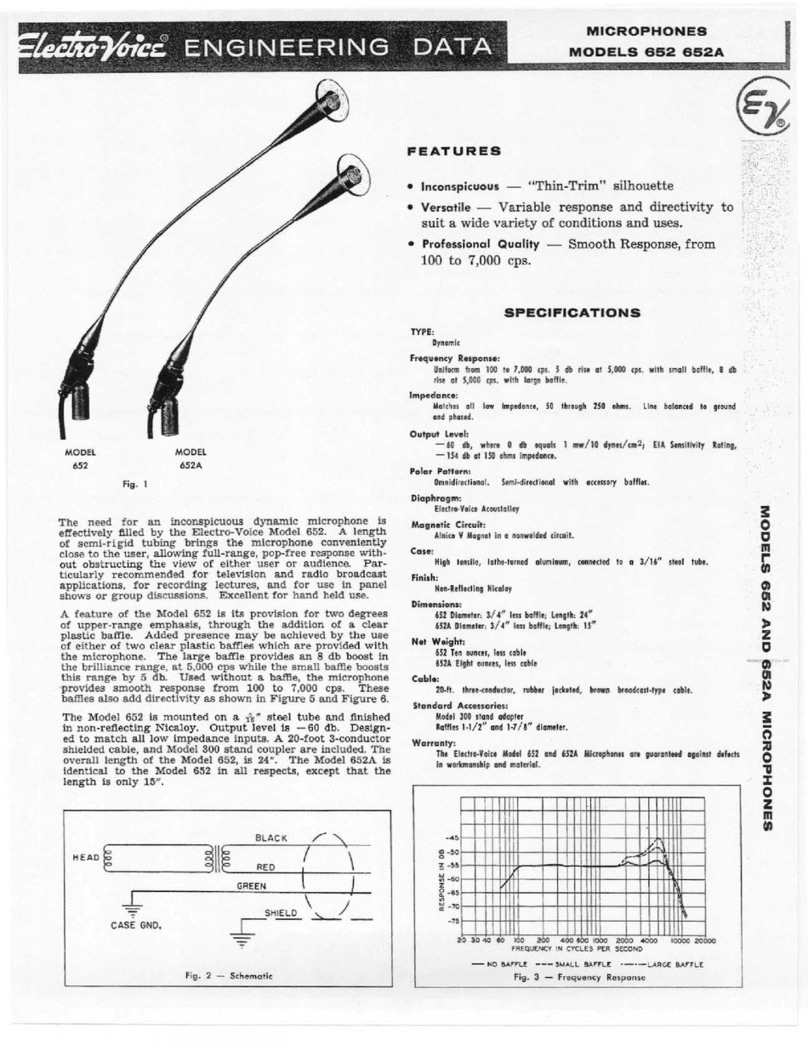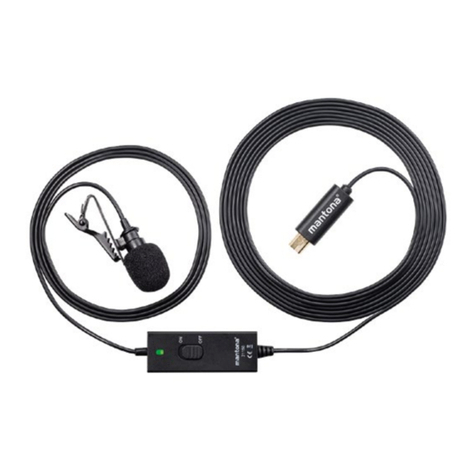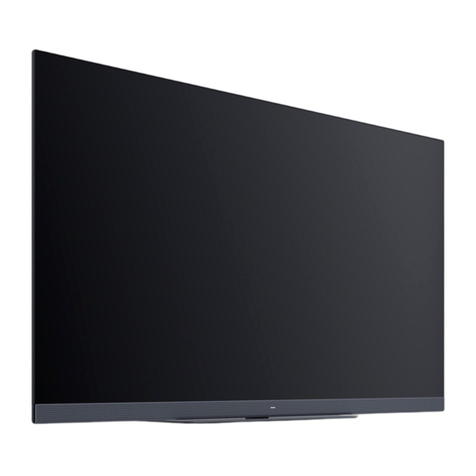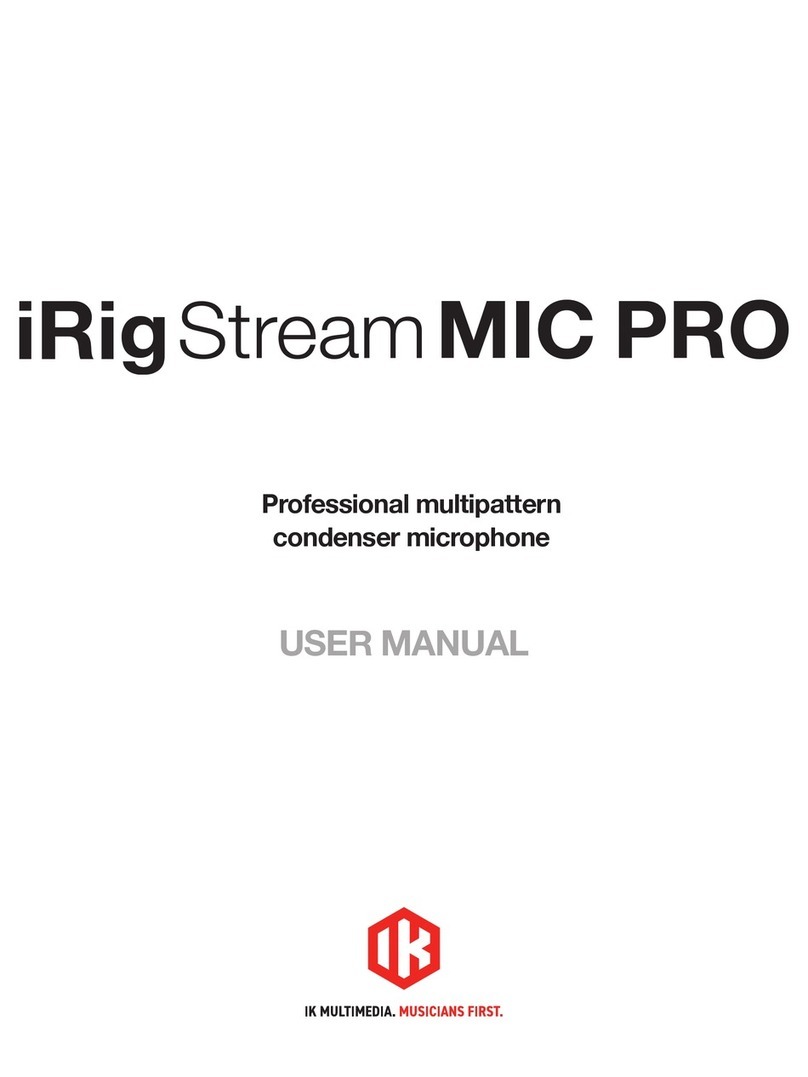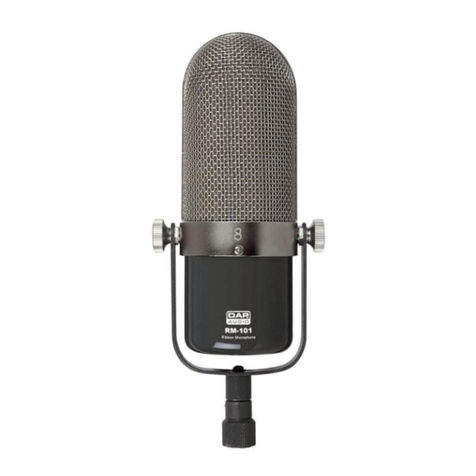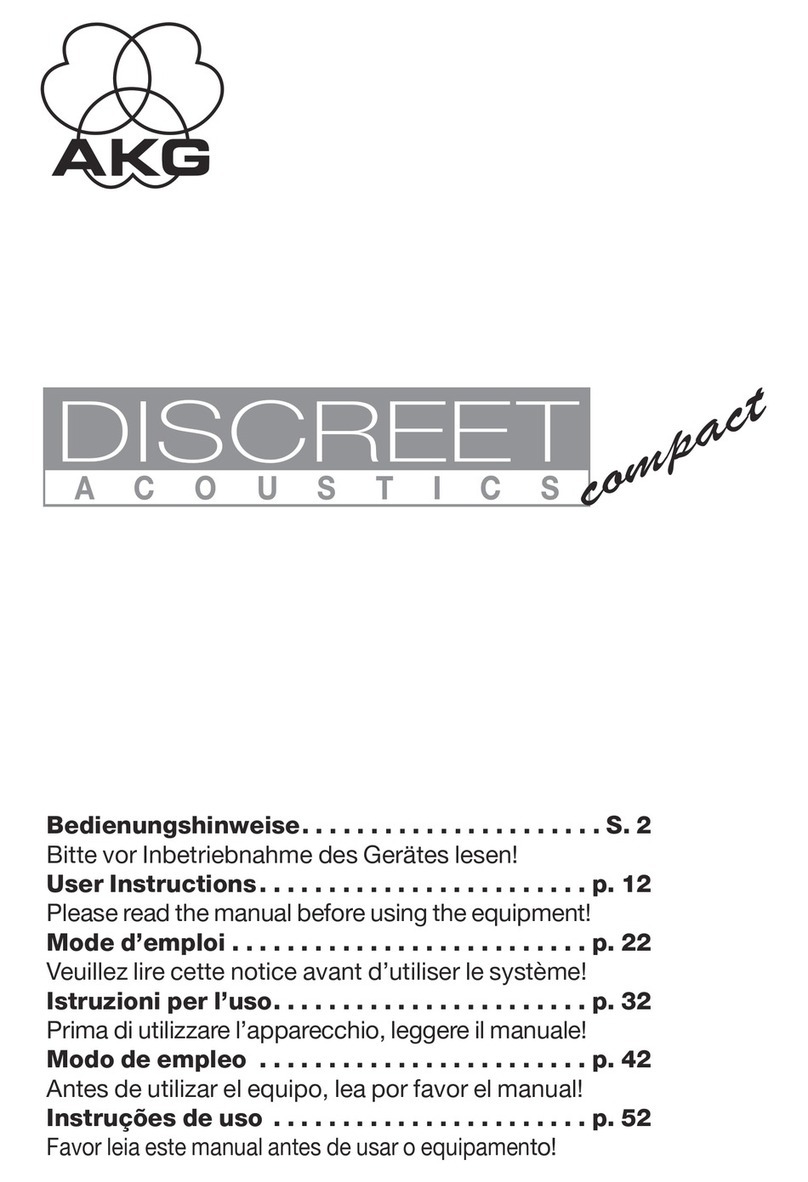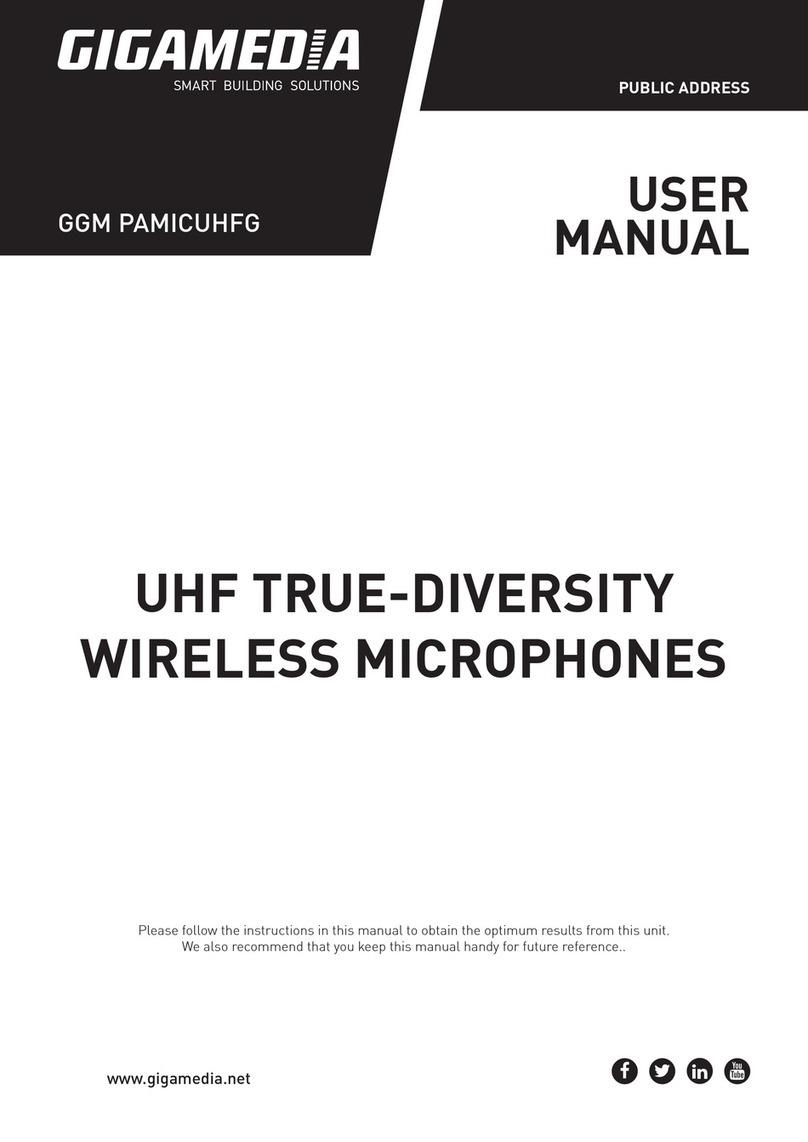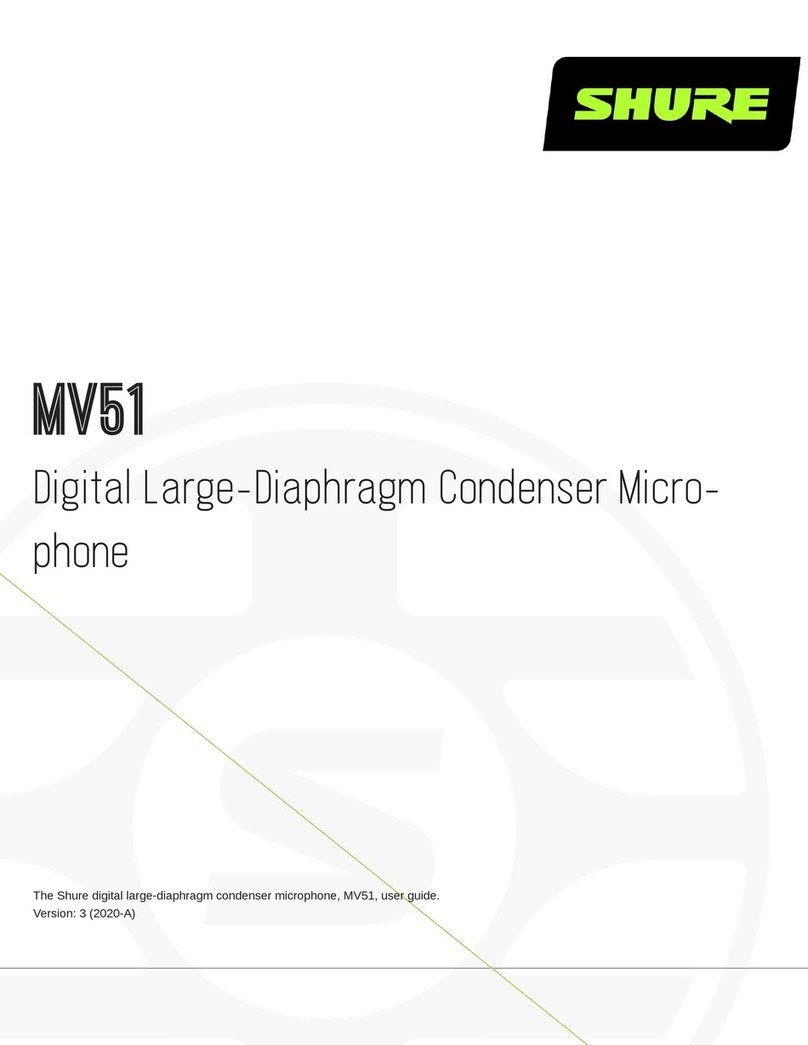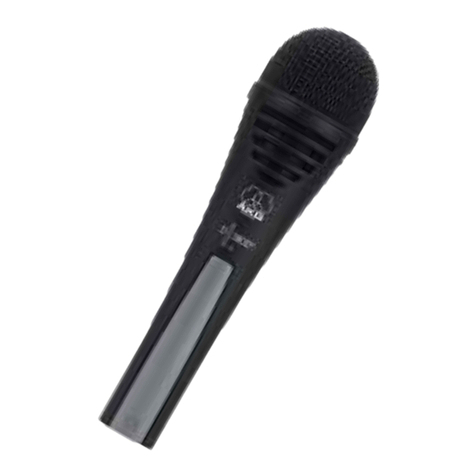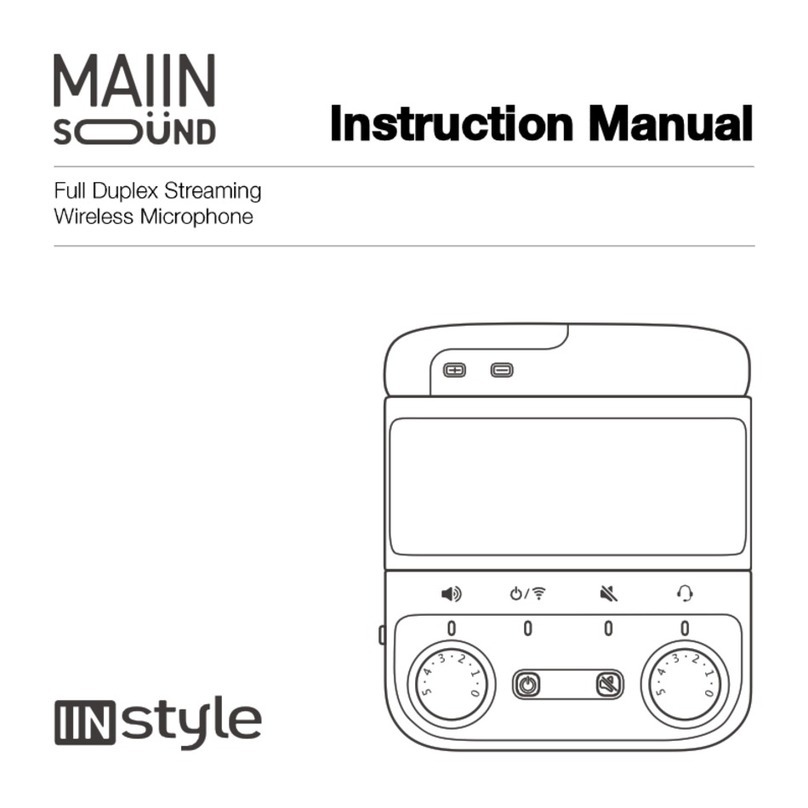2
EN
Introduction
The WRT-800A is a wireless microphone to be used in
combination with the WRR-800A/801A UHF Synthesized
Diversity Tuner for an 800-MHz band UHF synthesized
wireless microphone system.
Transmitting Channel Band
The microphone/transmitter and tuners of the wireless
microphone system are classified by frequency band.
A 14-MHz frequency band (or two consecutive-numbered
TV channels, such as 62 and 63 of the WRT-800A/CE62
model) or an 8-MHz frequency band (or TV channel 69 and
UK General Use) is assigned to each microphone/transmitter
and tuner model.
In building a UHF wireless microphone system, be sure to
combine a microphone/transmitter and a tuner having the
same TV channel number.
CE62 model
A 14-MHz frequency band is assigned to the WRT-800A/
CE62 model, permitting it to operate on any of 111 carrier
frequencies in 125-kHz steps of Sony original channel plan
or 561 carrier frequencies in 25-kHz steps of German User
Groups in the range of TV channels 62 and 63.
CE64 model
A 14-MHz frequency band is assigned to the WRT-800A/
CE64 model, permitting it to operate on any of 111 carrier
frequencies in 125-kHz steps of Sony original channel plan
or 561 carrier frequencies in 25-kHz steps of German User
Groups, in the range of TV channels 64 and 65.
CE69 model
An 8-MHz frequency band is assigned to the WRT-800A/
CE69 model, permitting it to operate on any of 64 carrier
frequencies in 125-kHz steps of Sony original channel plan
in the range of TV channel 69 or 14 carrier frequencies in
25-kHz steps of UK General Use.
For the selectable wireless channels and frequencies, see
“Wireless Channel Lists.”
